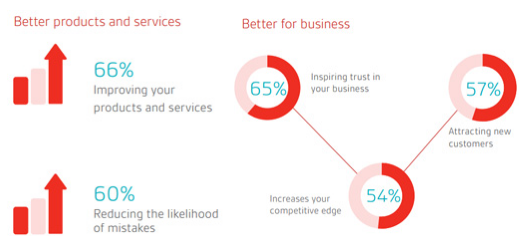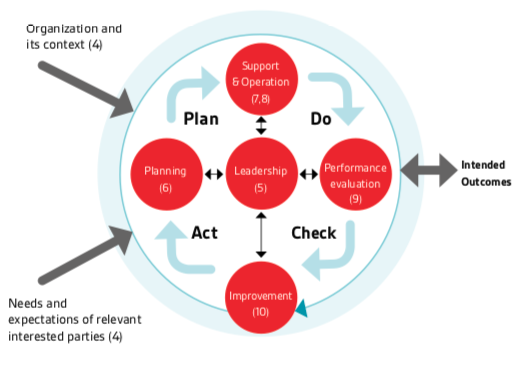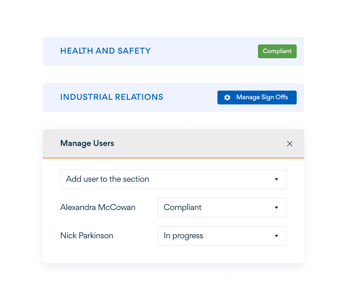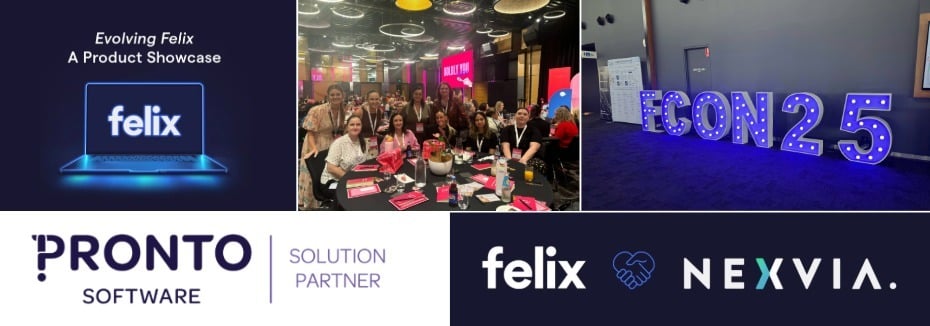International Organisation for Standardisation (ISO) is an independent, non-governmental, global organisation that develops standards to ensure the quality, safety, and efficiency of products, services, and systems.
ISO certifications help businesses stand out. Each certification has separate standards and criteria and is classified numerically.
ISO - Construction & Engineering?
The construction and engineering industries have never been more saturated and competitive. Both require complex tendering and public reporting on legislative topics such as: modern slavery, environmental sustainability, local content and Indigenous participation.
Although winning projects is the immediate goal for businesses, the ability for companies to build strong and lasting relationships with its clients, to be able to time and time again deliver successful projects across a range of scenarios, will ultimately determine a business’s success. Holding an ISO certification in this industry is a way to stand out from the crowd when competing on project bids.
ISO 9001 - Quality Management
ISO 9001 - the world’s most popular management system standard – is all about quality management. This standard helps businesses and organisations become more efficient and operationally resilient, which ultimately improves customer satisfaction. The quality management system (QMS) standard was last updated in 2015, thus you will see its full name being ISO 9001:2015.
Being visible by your customers in construction and engineering as an ISO 9001 certified business is highly enticing and the certification brings with it a sense of knowledge, skill and trust.

Benefits of ISO 9001. Source: BSI
The core requirements of ISO 9001
Each construction project comes with its own set of peculiarities, but quality needs to be consistent. Some attributes that greatly aid construction companies in getting certified are: demonstrating strong delivery methodology with sufficient quality control measures, assurance that hazards are identified, and risk is mitigated throughout the process of construction and engineering.
Let’s dive into the core components or requirements of ISO 9001 in more details.
Context of the Organisation
Thoroughly align your business objectives and intent with the QMS. Given subcontractors in engineering and construction are heavily relied upon and carry significant risk when delivering projects, organisations need to ensure they are also informed and aligned on quality management.
Leadership
Buy-in AND accountability from senior management within an organisation is integral to the adoption of ISO 9001 throughout the business. Leaders within an organisation need to set the standard by having an input on establishing the framework, allocating stakeholders to lead the process and providing feedback to operational staff.
Planning
Plan for how the organisation addresses risks and opportunities to ensure the QMS’s ongoing efficacy. Naturally, this is also where objective setting in relation to quality takes place.
Support
Consider what resources (people, knowledge, infrastructure) are needed for the quality management system not only during the certification process, but taking the lead once certified to ensure the framework is adopted amongst stakeholders.
Operation
This is about the actual execution of the QMS. In the construction and engineering industry, that means a large proportion would be about ensuring the subcontractors are: firstly qualified to do the work; secondly monitored, measured and communicated to throughout the project.
Performance Evaluation
As “what gets measured gets managed”, it’s important to establish the metrics and methods of monitoring, measurement and analysis. Not only that, performance evaluation should be done on a consistent basis and require collaboration amongst stakeholders, internal and external.
Improvement
Once performance evaluation is complete and gaps have been identified, it is time to make improvements where necessary. Actively looking out for opportunities to improve processes or services is also key.

How the requirements of ISO fit into the Plan-Do-Check-Act model. Source: BSI
SaaS platforms for ISO 9001 certification?
Modern day SaaS platforms are making the process of gaining an ISO 9001 certification more streamlined for businesses in construction and engineering, who heavily rely on third-party service providers.
Indeed, businesses need to have developed their organisation-wide strategy or framework around quality management first (the Planning component above). Then technology should serve as an enabler.
Platforms such as Felix allow greater oversight for senior leadership to mitigate risk and
allocate resources, as well as encourage collaboration and knowledge sharing amongst staff and projects to drive quality and ultimately better project outcomes.
Documented information with controlled access

When looking to gain ISO 9001 certification, part of the formal process is demonstrating how a business can implement a QMS throughout its supply chain. Felix creates the foundation blocks for demonstrating this process by acting as the central point for all vendor data.
With a cloud-based platform, the infrastructure is available anytime anywhere to support the QMS rollout and operations. Especially with WFH being the new norm, technology has proven to be a powerful efficiency tool.
Ensuring the competence of third-party vendors
Felix provides a two-sided portal which creates efficiency and mitigates risk, as the onus is on the subcontractors to maintain their own information over the lifecycle of their relationship with the organisation. The platform is flexible and agile allowing organisations to establish business specific, risk-based workflows for vendors to prequalify and upload/manage their compliance documents.
To ensure process, frameworks and governance is adhered to, Felix has smart notifications built throughout the platform, ensuring that both vendors and organisational staff are aware of: upcoming compliance document expiry (licence, insurance etc), contractor performance evaluations, expiring contracts and more.
Integration of vendor data and sourcing events
Various people who play a role in the QMS such as procurement, HSEQ, finance, contracts and senior executives can utilise the platform to collaborate, drive quality and maintain adherence to an established central framework.

After engaging with a vendor, performance evaluation data can feed back to the central vendor data hub, along with contract information. This ensures quality in operations by making the information about subcontractor performance accessible to relevant stakeholders, which allows for rectification/improvement.
Lastly, there are stringent ISO 9001 requirements around traceability and auditability. Hence, a software platform with an audit trail functionality can certainly aid in that regard.
An “ISO 9001 - worthy” prequalification process
Prequalification in the industry has typically been a long and arduous process for subcontractors to complete. A core component of a prequalification questionnaire in the construction industry is the ability for a vendor to demonstrate quality management in their supply chain.
If a vendor happens to be ISO 9001 certified, then simply submitting the certificate would demonstrate satisfactory compliance. However, this is often not the case, which means organisations need to go through a lengthier review process.
Felix – Vendor Optiqual®
The process to configure a prequalification questionnaire set can be long and drawn out as it requires input from various stakeholders within an organisation.
Felix Vendor Optiqual® is a prequalification framework designed specifically for asset owners, builders and constructors to optimise their understanding, trust and visibility of their high-risk supply chains.
Prequalifying your supply chain through the Felix Vendor Optiqual® framework empowers organisations to be more productive and focus on value-accretive tasks, whilst ensuring supply chain risk is being managed effectively through a best-practice framework. 

Recent Articles
2025 in review: Milestones, insights and achievements
2025 – a year of that brought meaningful developments for Felix as we continue to address the evolving needs of organisations navigating complex supply-chain environments.
Top 10 reasons for a centralised vendor database
As organisations grow, so does the complexity of managing vendor relationships. Many still rely on spreadsheets or siloed systems, which can lead to inefficiencies, data inconsistencies, and compliance risks. A centralised vendor database offers a smarter, more scalable solution that brings structure, visibility, and control to procurement operations.
Here are the top 10 reasons why centralising your vendor data is a strategic move.
Five ways poor contract storage could be costing your organisation money
Contracts are the backbone of every business relationship – legally binding documents that define expectations, responsibilities, and value.
But what if the way your organisation stores those contracts is quietly costing you money?
Let's stay in touch
Get the monthly dose of supply chain, procurement and technology insights with the Felix newsletter.






